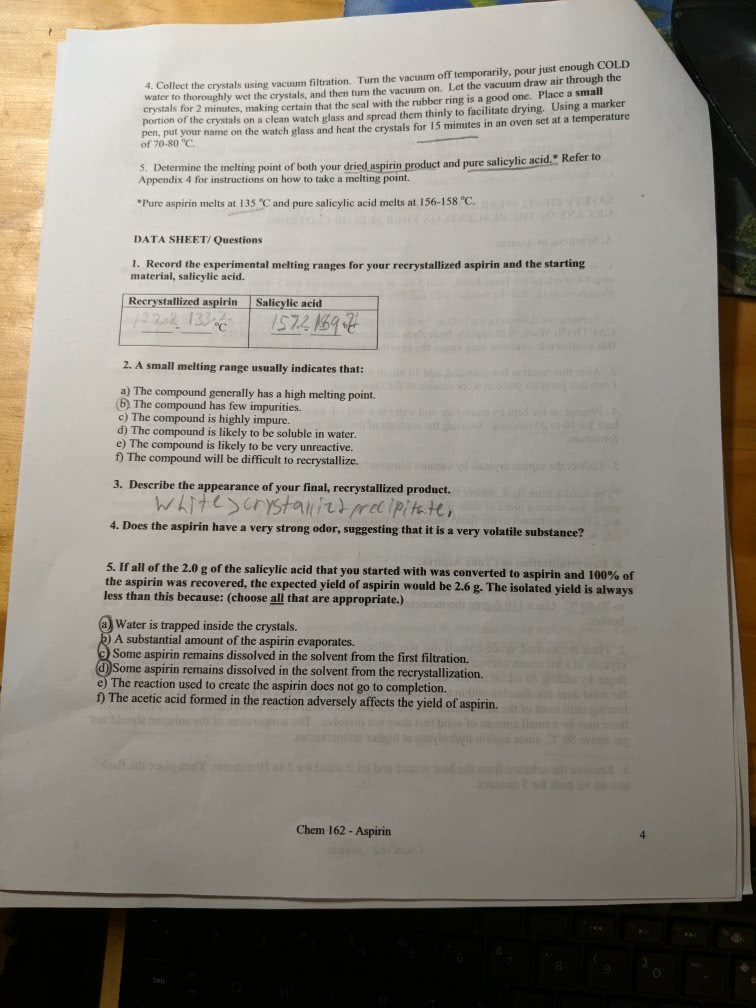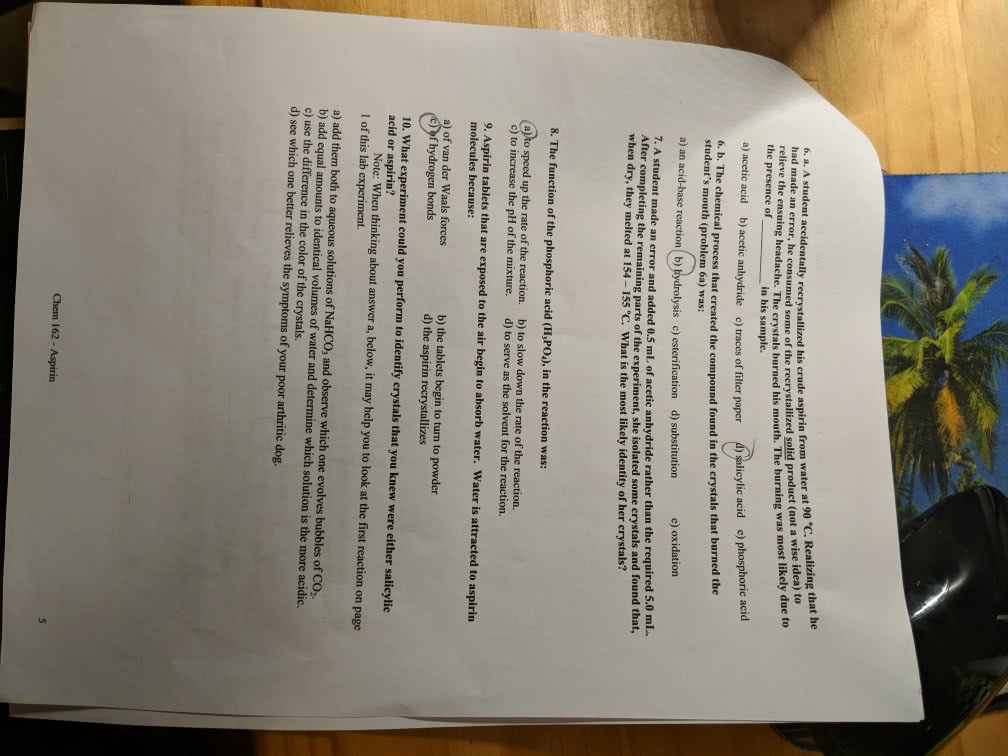CHEM 14BL Lecture Notes - Lecture 2: Salicylic Acid, Acetic Anhydride, Crystal Growth
88 views3 pages
18 Feb 2017
School
Department
Course
Professor
Document Summary
Salicyclic acid + acetic anhydride aspirin + acetic acid. Salicyclic acid is the limiting reagent in this reaction. % yield = moles of product obtaines / moles of product possible. In this case, % yield = moles aspirin / moles of salicyclic acid. Crystallization: technique to purify a solid compound. It akes advantage of the differing solubility of the compound with temperature. Pure crystals thermodynamically more stable than crystals wiht impurities. Most compounds more soluble in hot solvent than cold solvent. Organic molecule + heat + solvent solution. Most soluble impurities or by-products of reactions have similar solubility properties to the main product. Usually amount of impurity is much less than amount of desired product. Recrystallation of impure solid: dissolve impure product in a minimum amount of hot solvent. This minimizes loss of product in residual cool solution. Actual amount of solvent depends on temperature, rate of solution, quantity of impurity.
Get access
Grade+
$40 USD/m
Billed monthly

Homework Help
Study Guides
Textbook Solutions
Class Notes
Textbook Notes
Booster Class
10 Verified Answers
Class+
$30 USD/m
Billed monthly

Homework Help
Study Guides
Textbook Solutions
Class Notes
Textbook Notes
Booster Class
7 Verified Answers
Related textbook solutions
Chemistry: Structure and Properties
2 Edition,
Tro
ISBN: 9780134293936
Basic Chemistry
5 Edition,
Timberlake
ISBN: 9780134138046
Principles of Chemistry Molecular Approach
4th Edition,
Tro
ISBN: 9780134112831
Chemistry: Structure and Properties
2nd Edition,
Tro
ISBN: 9780134293936
Principles of Chemistry Molecular Approach
3rd Edition, 2014
Tro
ISBN: 9780321971944
Chemistry: A Molecular Approach
3rd Edition,
Tro
ISBN: 9780321809247
Chemistry: A Molecular Approach
5th Edition,
Tro
ISBN: 9780134874371
Principles of Chemistry: A Molecular Approach
4th Edition,
Tro
ISBN: 9780134895741
Chemistry: The Central Science
14th Edition, 2017
Brown
ISBN: 9780134414232

